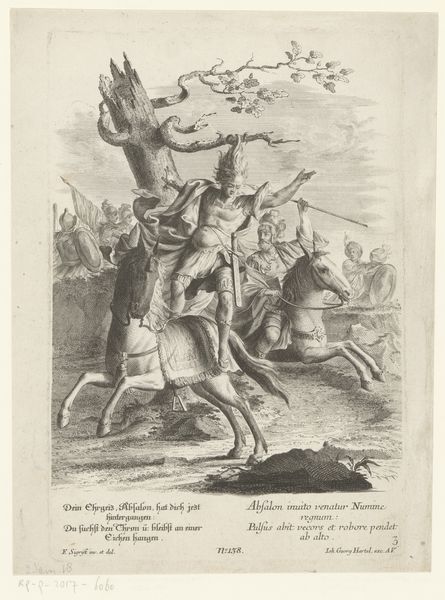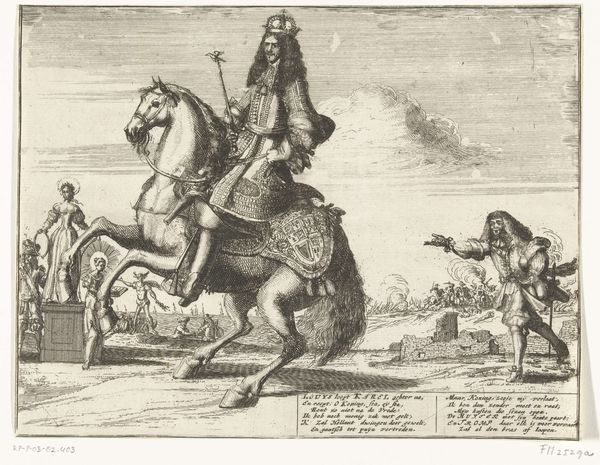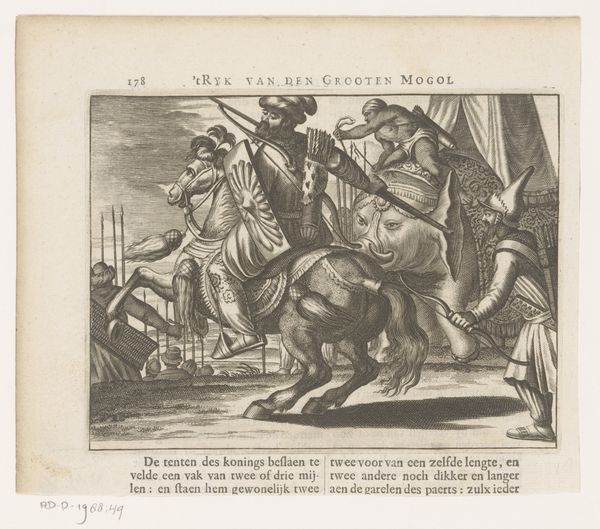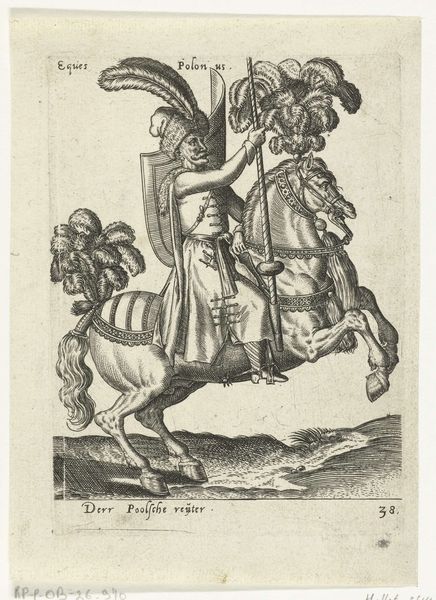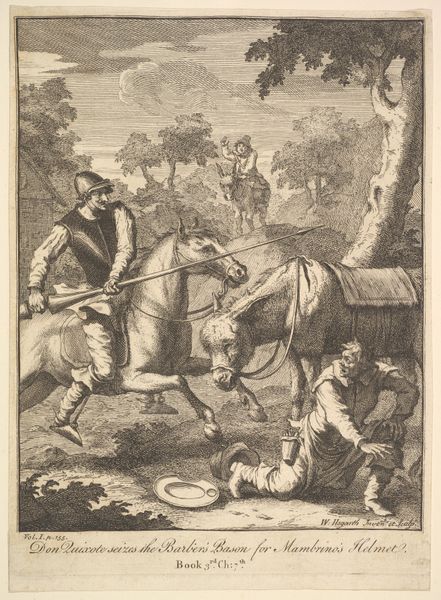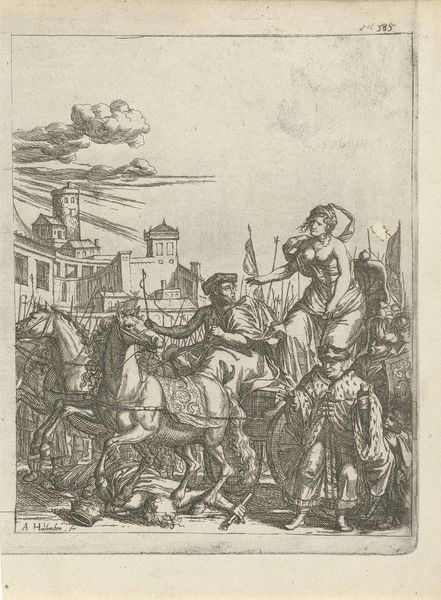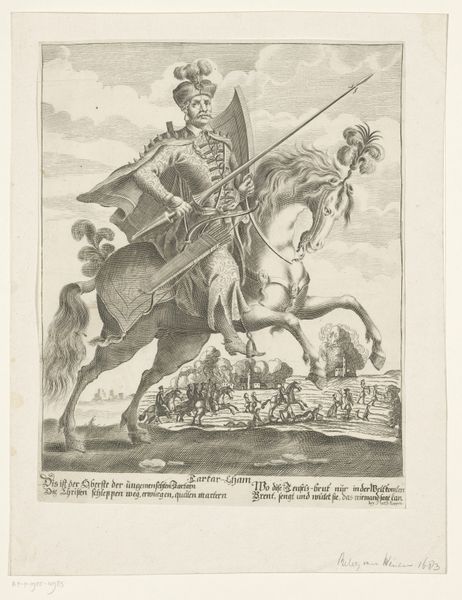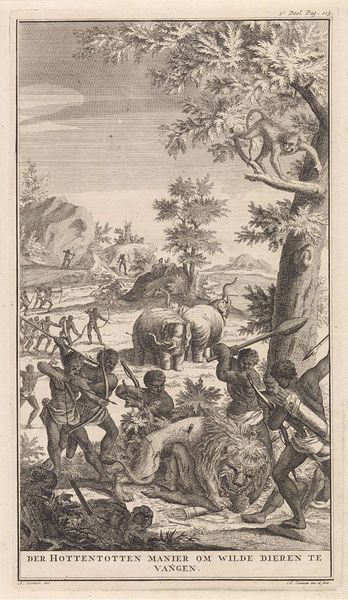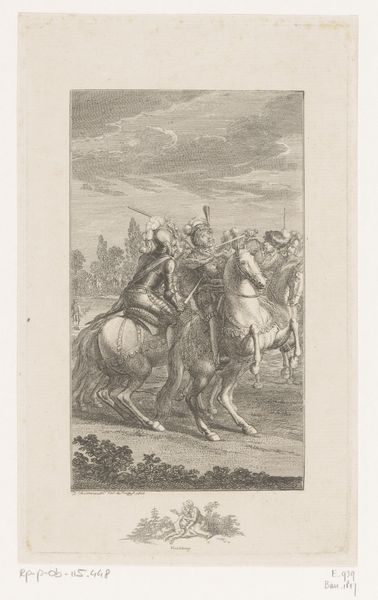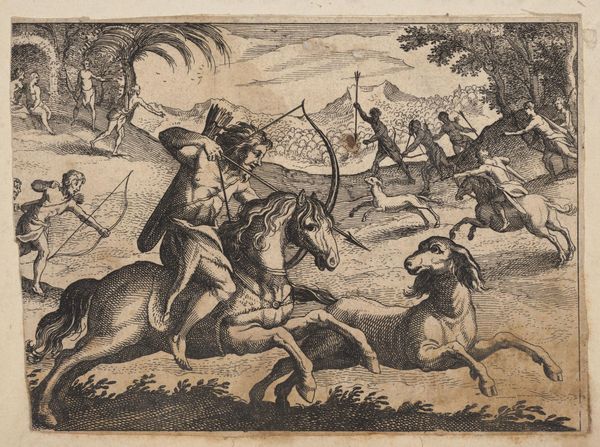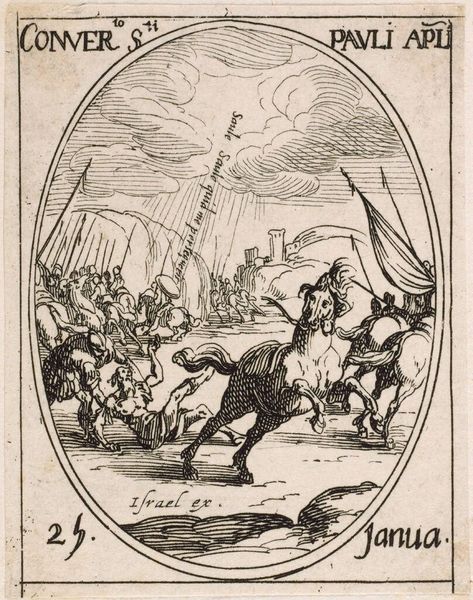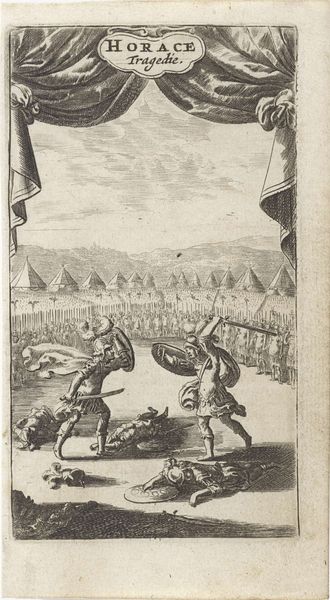
print, engraving
#
narrative-art
#
baroque
# print
#
figuration
#
history-painting
#
grotesque
#
engraving
Dimensions: height 297 mm, width 193 mm
Copyright: Rijks Museum: Open Domain
Curator: This is “Metselaars voor Dinant, 1696,” an engraving currently held at the Rijksmuseum. Its maker is unfortunately unknown. Editor: My first thought is: unsettling! That central figure is terrifying, dominating the scene with its grotesque features. There is also a frantic activity surrounding it. Curator: Indeed. We’re looking at a representation—perhaps even a satirical one—of the bricklayers of Dinant. The demon, holding what appears to be a legal document, seems to be supervising, or perhaps compelling, their work on the city walls. We see the outline of Dinant itself in the background. Editor: That makes me wonder about the document, and why the artist chooses to depict the construction like this? What symbols are embedded? Curator: It’s an interesting inversion, isn’t it? What is seemingly ordinary construction work becomes tied to chaos and the diabolical. I wonder about its contemporary reception; I’m guessing it spoke to broader societal anxieties regarding labor, maybe class structures. The city is being literally built on the backs of something sinister, not sure what the context suggests here. Editor: Perhaps even fear of the changing urban landscape? The imposing walls suggest fortification but might also speak to themes of imprisonment and oppression if seen through the eyes of a commoner or someone marginalized at the time. We must wonder also whether these laborers were given a say. The imagery has echoes of much older folklore but updated with, what is a kind of bureaucratic terror in the holding up of the document! Curator: Exactly. The figure clearly evokes classical depictions of demons, so is this merely religious propaganda, or a commentary on the political undercurrents of labor? It requires some serious interrogation of baroque society and maybe its engagement with the so-called demonic and what purpose this symbolism might be intended. Editor: I’ll certainly be contemplating what that means for a while. Thanks for helping unlock some of the piece’s deeper context. Curator: Of course. Considering it’s an unsigned work, it certainly speaks volumes!
Comments
No comments
Be the first to comment and join the conversation on the ultimate creative platform.
